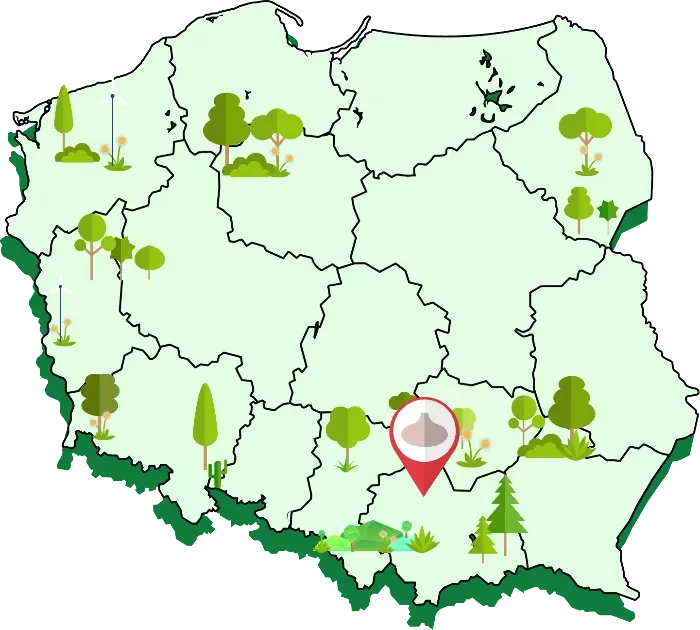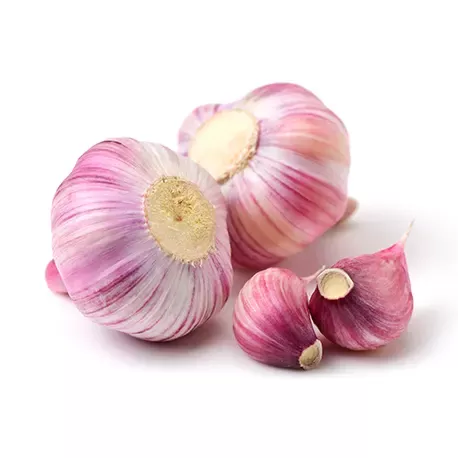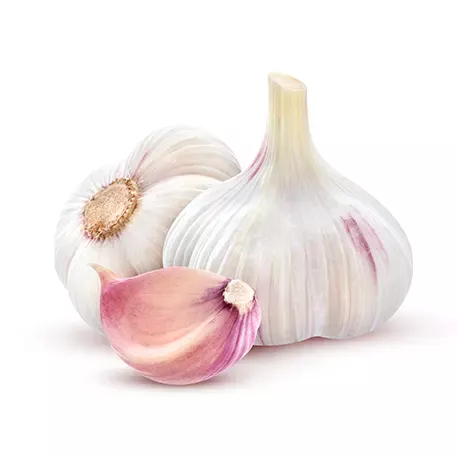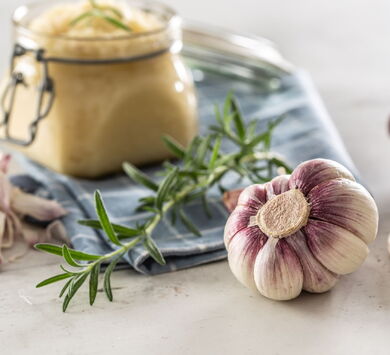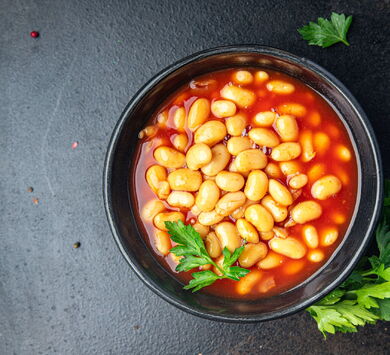Garlic
One of the oldest cultivated plants that has gained worldwide recognition. It is eaten on all continents and known by all cultures. This vegetable is valued not only for its taste, but above all for its health-promoting properties.

It owes its characteristic smell to the essential oil - allicin, which contains sulphur compounds with an unpleasant odour. Those who avoid eating garlic for fear of bad breath should try a proven way to remedy this. After eating garlic, you might want to eat a fresh apple as soon as possible - it's rumoured to be quite effective!
Garlic is a valuable source of B group vitamins such as B1, B2, PP. It contains minerals such as calcium, magnesium and potassium. It also contains numerous antioxidant compounds, essential oils with anti-inflammatory and anti-free radical effects.
SPECIES
Harnaś
It is the most popular domestic variety, arriving commercially at the earliest, as it spends the winter in the ground. This variety has a large bulb and purple-coloured scales. It's fairly difficult to peel, but for some dishes you don't need to peel the garlic at all - putting the whole bulbs in the oven produces roasted cloves that are perfect for making cream soups or a spicy spread for sandwiches.
Arkus
A moderately early variety with large, purplish scales. It arrives in stores about a week after Harnaś, and most of it is used in the food industry.
Galician garlic
This term is used for garlic of Arkus and Harnaś varieties grown in certified associated farms in the Lesser Poland province. This garlic is grown within the municipalities of: Słomniki and Radziemice, and the following villages in the municipality of Koniusza: Niegardów, Niegardów Kolonia, Piotrkowice Wielkie, Budziejowice and Muniaczkowice.
What makes Galician garlic stand out from the vegetables in its category? The scales of the Galician garlic bulbs are purple or pink. The bulb itself is large with few cloves, making the size of a single clove larger compared to other garlic varieties. Galician garlic has a high content of alliin (a compound responsible for the garlic's characteristic flavour) - on average 5% more than garlic of the same variety grown in other parts of the country.
NUTRITIONAL VALUE
Nutritional value per 100g of garlic:
ENERGY VALUE
PROTEIN
FATS
CARBOHYDRATES
VITAMIN C
POTASSIUM
Garlic FOR YOUR HEALTH!
Against inflammation
Garlic has a scientifically proven anti-inflammatory effect. This effect is due to allicin, which is released from crushed garlic cloves. It impacts the immune system, improving its ability to fight pathogens. Therefore, a few cloves of garlic can be beneficial in counteracting inflammation and also speed up recovery.
Anti-atherosclerotic effect
Garlic has been shown to normalise triglyceride levels in the blood. It helps, among others, lower the level of LDL cholesterol, the one responsible for the accumulation of atherosclerotic plaque in the lumen of blood vessels.
For longevity?
This effect of garlic is, unfortunately, difficult to prove, but there is no doubt that regular consumption of fruit and vegetables has a beneficial effect on the health and condition of consumers. By eating these products, we increase our chances of living a healthier and longer life.
PRODUCTION MAP
Garlic in Poland is produced, among others, in the Małopolskie Voivodeship. Galician garlic is produced only within the municipalities of Słomniki and Radziemice and in the smallest administrative units of the municipality of Koniusza: Niegardów, Niegardów Kolonia, Piotrkowice Wielkie, Budziejowice i Muniaczkowice.
